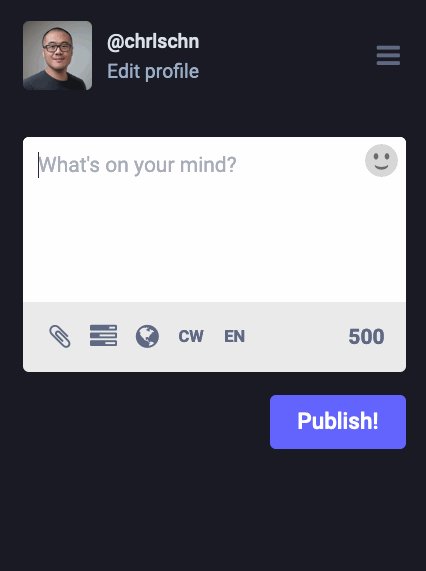Mastodon is Rewinding the Clock on Social Media — in a Good Way

A comment on a Hacker News thread on a Business Insider article titled It’s not just you — no one is posting on social media anymore got me thinking about my experience with switching to Mastodon and why I have found it a refreshing experience.

This is probably a very common sentiment for anyone who hasn’t tried Mastodon yet (and stuck with it). Indeed, on the surface, it’s easy to think that these two platforms fill the same social media niche, but I think there’s a bit more nuance and I personally find Mastodon to be a far superior experience.
If you think back on the early days of Facebook and Twitter, what was great was that it was mostly content that you wanted to see or opted-in to see. You did this by following people or following hashtags.
Today?
Well, you’ve probably noticed that your X and Facebook feeds are filled with:
- Ads
- Content from people you didn’t actually choose to follow
- Ads
- Content that is indistinguishable from an ad
- Ads
- Content seemingly being pushed with some agenda
- Ads
- Elon
- Ads
- Updates from people you explicitly and actively chose to follow.
Why am I seeing this and how do I make it go away?
For example:

I’m not a Connor McGregor fan nor am I even interested in UFC in the slightest; why is this in my feed 🤷♂️?
A little bit further down:

As you might guess, I’m also not interested in the latest #selenagomeznews. (I can only conclude that Meta might want to rethink an entire chunk of their product and engineering teams).
The story isn’t much better at X. This is at the top of my X feed:

If this experience with social media platforms resonates with you, then Mastodon might be the alternative that you didn't know you needed.
In many ways, Mastodon feels like rewinding the clock on social media back to the early days of Twitter and Facebook. On the consume side, that means that your home feed has no Algorithm (big-A “Algorithm”). This can be disorienting at first when coming from X and FB.
Practically, it means that you see only what you want to see and only see it linearly. You never wonder “why am I seeing this and how do I make it go away?”. Content can only enter your home feed via your followed tags or handles (and actions by your followed handles) and the feed is linear like the early days of social media.
Early Facebook was great; I personally used it as a news feed as I would only like and follow sources I wanted news from. Occasionally, I’d also see updates from my friends and family.
Today?
The feed is Algorithmically assembled and full of content that is an ad or is indistinguishable from an ad. Because of course, both Facebook and X make their money from ads and algorithmic engagement. The entire point is to serve you more ads!
Am I seeing this because someone paid to boost their views? How do I get this feed to behave? How can I stop this content from showing in my feed? Hypothetical questions; maybe it’s possible with a lot of tuning and configuration, but Mastodon just does exactly what I want/expect out-of-the-box: follow these tags + follow these people = see this content in a linear flow.
To me, this simplicity makes it much more useful and approachable on the consume side.
On the publish side, one of the neat features of Mastodon is that it lets you see the activity levels of tags in the past week. This makes it easier to decide “how should I tag this content?”:

This is especially useful when trying to reach an audience in a niche community.
One other key aspect that feels like it should be obvious — but may not be because of how jaded we are nowadays — is that you don’t have to figure out the platform settings for privacy to opt out of ads, AI, tracking, and so on. Yes, there are still privacy settings to toggle, but Mastodon isn’t an ad platform and doesn’t make money from being able to track you across the web and feeding you ads (“re-targeting” in marketing speak).
For me, Mastodon and the so-called “Fediverse” are rewinding the clock on social media in the best way possible. Its usage is more intuitive on both the publishing and subscription side without a big-A Algorithm deciding what your see. If you found utility using early Twitter and early Facebook, then you’ll instantly find Mastodon a more pleasant and intuitive experience.
In the end, perhaps we could say that Mastodon is “just” a Twitter clone, but it’s a clone of everything we loved or found useful about social media platforms like Twitter and Facebook before they became algorithmic ad platforms — it’s Twitter and Facebook before enshittification took over.
If you haven’t tried it yet and you long for the days when Twitter and Facebook still provided utility, I’ll see you in the Fediverse @chrlschn@mastodon.social!
P.S. It’s important to understand that the Mastodon model is oriented around topics and communities more so than creators. As such, you’ll get the most out of your experience by following tags for topics you are interested in first and then follow handles for folks that post to those tags or communities. This is perhaps inverted from the X, Facebook, and IG paradigm where those platforms are oriented around creators and where you would follow handles first.
